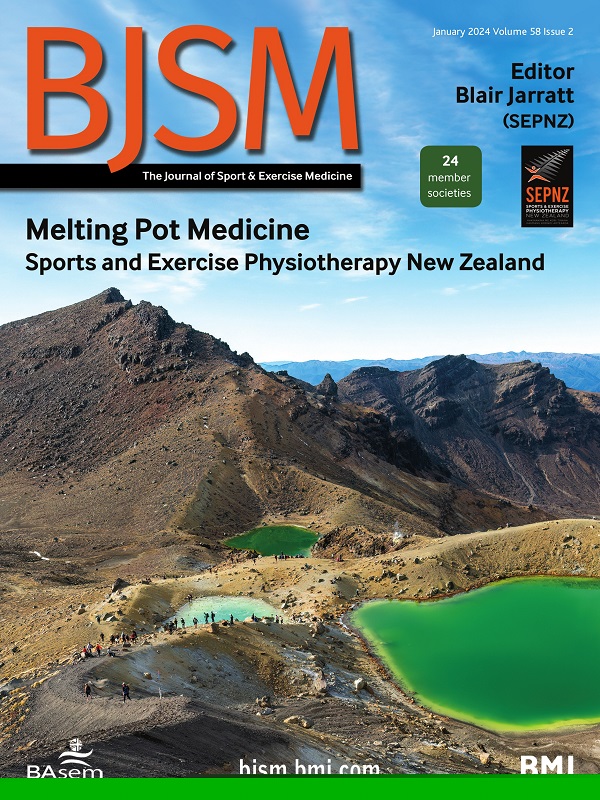站在阴影中:站立是心脏代谢健康的补品还是毒素?
IF 16.2
1区 医学
Q1 SPORT SCIENCES
引用次数: 0
摘要
需要将站立对健康的影响置于研究的聚光灯下。1 举例来说,图 1 比较了英国中年人2 和坦桑尼亚哈扎族成年人1 在各种姿势下所花费的设备测量时间,后者仍然过着典型的狩猎采集生活。这些数据表明,在现代西方社会中,成年人的站姿时间是典型狩猎采集者的两倍多,而迈步时间则更少。不同人群之间的许多差异可能会混淆这些差异,但它们表明,在全球范围内,成年人的身体行为组合可能会有所不同,这取决于他们是生活在农业社区、工业社区还是以信息为基础的社区。目前,大部分成年人每天都要花费大量时间站立,最近的国际成年人队列数据显示,每天站立的时间达到了惊人的 3.1-4.6 小时,约占总清醒时间的 19%-29%2 3 图 1 英国中年成年人2 (代表现代生活方式)与哈德扎人在设备测量的姿势和活动(久坐、站立、迈步和睡眠)分配方面的比较...本文章由计算机程序翻译,如有差异,请以英文原文为准。
Standing in the shadows: is standing a tonic or a toxin for cardiometabolic health?
Need to put the health effects of standing in the research spotlight. Since the turn of the century, the spotlight on the cardiometabolic risks of prolonged sitting has overshadowed the health effects of perhaps the greatest behavioural change in the transition from hunter-gatherers to modern humans: the remarkable increase in time spent standing.1 As an example, figure 1 makes a comparison in device-measured time spent in various postures between middle-aged British adults2 and Hadza adults in Tanzania1 who still live a typical hunter-gatherer lifestyle. These data illustrate that in modern western society adults spend more than twice as much time in standing postures while stepping less, than typical hunter-gatherers. There are many differences between the populations which might confound these differences, but they indicate that globally, adults might have different compositions of physical behaviours depending on whether they are living in agricultural, industrial or information-based communities. A large portion of present-day adults spend a considerable amount of their day standing, with recent data from international adult cohorts showing that daily standing accounts for a staggering 3.1–4.6 hours/day or approximately 19%–29% of total waking times.2 3 Figure 1 Comparison in device-measured posture and activity (sedentary, standing, stepping and sleeping) allocation between middle-aged British adults2 (representing modern lifestyle) and Hadza …
求助全文
通过发布文献求助,成功后即可免费获取论文全文。
去求助
来源期刊
CiteScore
27.10
自引率
4.90%
发文量
217
审稿时长
3-8 weeks
期刊介绍:
The British Journal of Sports Medicine (BJSM) is a dynamic platform that presents groundbreaking research, thought-provoking reviews, and meaningful discussions on sport and exercise medicine. Our focus encompasses various clinically-relevant aspects such as physiotherapy, physical therapy, and rehabilitation. With an aim to foster innovation, education, and knowledge translation, we strive to bridge the gap between research and practical implementation in the field. Our multi-media approach, including web, print, video, and audio resources, along with our active presence on social media, connects a global community of healthcare professionals dedicated to treating active individuals.

 求助内容:
求助内容: 应助结果提醒方式:
应助结果提醒方式:


